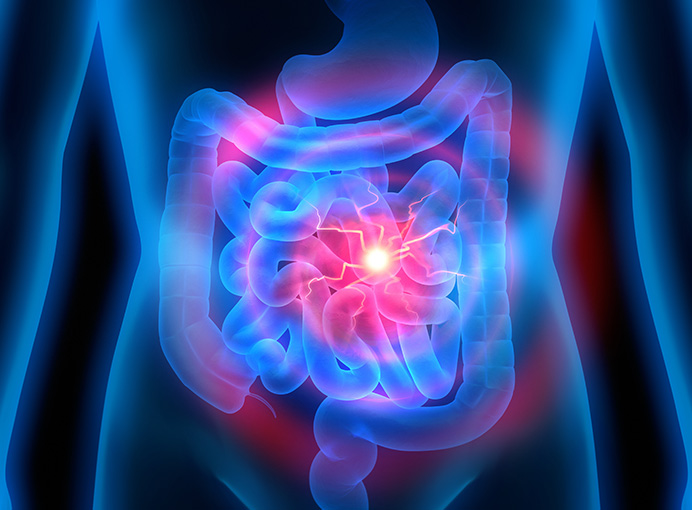Diagnosis
The only way to confirm a celiac disease diagnosis is to have an intestinal biopsy. A pathologist will assign a Modified Marsh Type to the biopsy findings. A Type of 3 indicates symptomatic celiac disease. However, Types 1 and 2 may also indicate celiac disease.

Why an Intestinal Biopsy?
An intestinal (duodenal) biopsy is considered the “gold standard” for diagnosis because it will tell you (1) if you have celiac disease, (2) if your symptoms improve on a gluten-free diet due to a placebo effect (you feel better because you think you should) or (3) if you have a different gastrointestinal disorder or sensitivity which responds to change in your diet.
If the results of the antibody or genetic screening tests are positive, your doctor may suggest an endoscopic biopsy of your small intestine. An endoscopy is a procedure that allows your physician to see what is going on inside your GI tract. A scope is inserted through the mouth and down the esophagus, stomach and small intestine, giving the physician a clear view and the option of taking a sample of the tissue.
This is usually an outpatient procedure. Samples of the lining of the small intestine will be studied under a microscope to look for damage and inflammation due to celiac disease. It is recommended that the doctor take at least 4-6 duodenal samples from the second part of duodenum and the duodenal bulb, in order to obtain an accurate diagnosis.
What Does the Intestinal Biopsy Show? (Give Me the Science)
- Density of intra-epithelial lymphocytes (IELs), which are white blood cells found in the immune system. More than 25 IELs per 100 epithelial cells is significant. Epithelial cells line your intestines and act as a barrier between the inside and the outside of your body.
- Crypt hyperplasia with a decreased villi/crypt ration. Crypts are grooves between the villi, which are the small fingerlike projections that line the small intestine and promote nutrient absorption. Crypt hyperplasia is when the grooves are elongated compared to a normal intestinal lining which has short crypts.
- Blunted or atrophic villi. This is a shrinking and flattening of the villi due to repeated gluten exposure.
- Mononuclear cell infiltration in the lamina propria. The lamina propria is a thin layer of loose connective tissue, which together with the epithelium forms the mucosa which stops pathogens from entering the body.
- Epithelial changes, including structural abnormalities in epithelial cells.
The endoscopy itself may show scalloping and/or flattening of dudodenal folds, fissuring over the folds, and a mosaic pattern of mucosa of folds.
Modified Marsh Classification of Histologic Findings in Celiac Disease
The World Gastroenterology Organization recommends pathologists use a modified Marsh classification for interpretation. Dr. Michael Marsh introduced the classification system in 1992 to describe the stages of damage in the small intestine as seen under a microscope, also known as histological changes. Originally the Marsh Types ranged from 0 to 4, with a type of 3 indicating celiac disease. It has since been simplified to allow for a greater degree of consistency and reproducibility between pathologists.
| Marsh Type | IEL / 100 enterocytes – jejunum* | IEL / 100 enterocytes – duodenum* | Crypt hyperplasia | Villi |
|---|---|---|---|---|
| 0 | <40 | <30 | Normal | Normal |
| 1 | >40 | >30 | Normal | Normal |
| 2 | >40 | >30 | Increased | Normal |
| 3a | >40 | >30 | Increased | Mild atrophy |
| 3b | >40 | >30 | Increased | Marked atrophy |
| 3c | >40 | >30 | Increased | Complete atrophy |
Modified Marsh Classification of histologic findings in celiac disease (Oberhuber)
View table data
| Marsh Type | IEL / 100 enterocytes – jejunum* | IEL / 100 enterocytes – duodenum* | Crypt hyperplasia | Villi |
|---|---|---|---|---|
| 0 | <40 | <30 | Normal | Normal |
| 1 | >40 | >30 | Normal | Normal |
| 2 | >40 | >30 | Increased | Normal |
| 3a | >40 | >30 | Increased | Mild atrophy |
| 3b | >40 | >30 | Increased | Marked atrophy |
| 3c | >40 | >30 | Increased | Complete atrophy |

What to Expect During an Endoscopy
This procedure takes a little less than thirty minutes and, for adults, sedatives and local anesthetics are used. Children are usually put under general anesthesia. During the biopsy, the gastroenterologist will insert a small tube with a camera through the patient’s mouth and into the digestive tract to the small intestine.
Once there, the physician will examine the duodenum (entryway into the small intestine) and take multiple tissue samples due to the “patchy” nature of villous atrophy. The tissue samples will then be examined by a pathologist under a microscope and assigned a Marsh classification.
Since there are no nerve endings in the lining of the intestine, the procedure is not painful – though some patients may experience a sore throat.
Patients who cannot or will not tolerate an endoscopy may be given the option to undergo video capsule or “pill” endoscopy where a capsule the size of a large vitamin pill is swallowed and takes thousands of pictures of the small intestine. However, there is no conclusive evidence that this can substitute for traditional endoscopy and biopsy.
For Individuals with Dermatitis Herpetiformis (DH)
A skin biopsy is sufficient for diagnosis of both DH and celiac disease.
This biopsy involves collecting a small piece of skin near the rash and testing it for the IgA antibody. It is not necessary to perform an endoscopic biopsy to establish the diagnosis of celiac disease in a patient with DH; the skin biopsy is definitive.
For Children
For children with symptoms and signs of malabsorption, a very high tTG-IgA titer (>10 time upper limit of normal), and a positive EMA (antiendomysial) in a second blood sample, some physicians may recommend avoiding endoscopic biopsy, and directly starting a gluten-free diet.
Others may recommend genetic testing for additional confirmation. Resolution of symptoms while on a gluten-free diet may be used to confirm the diagnosis.